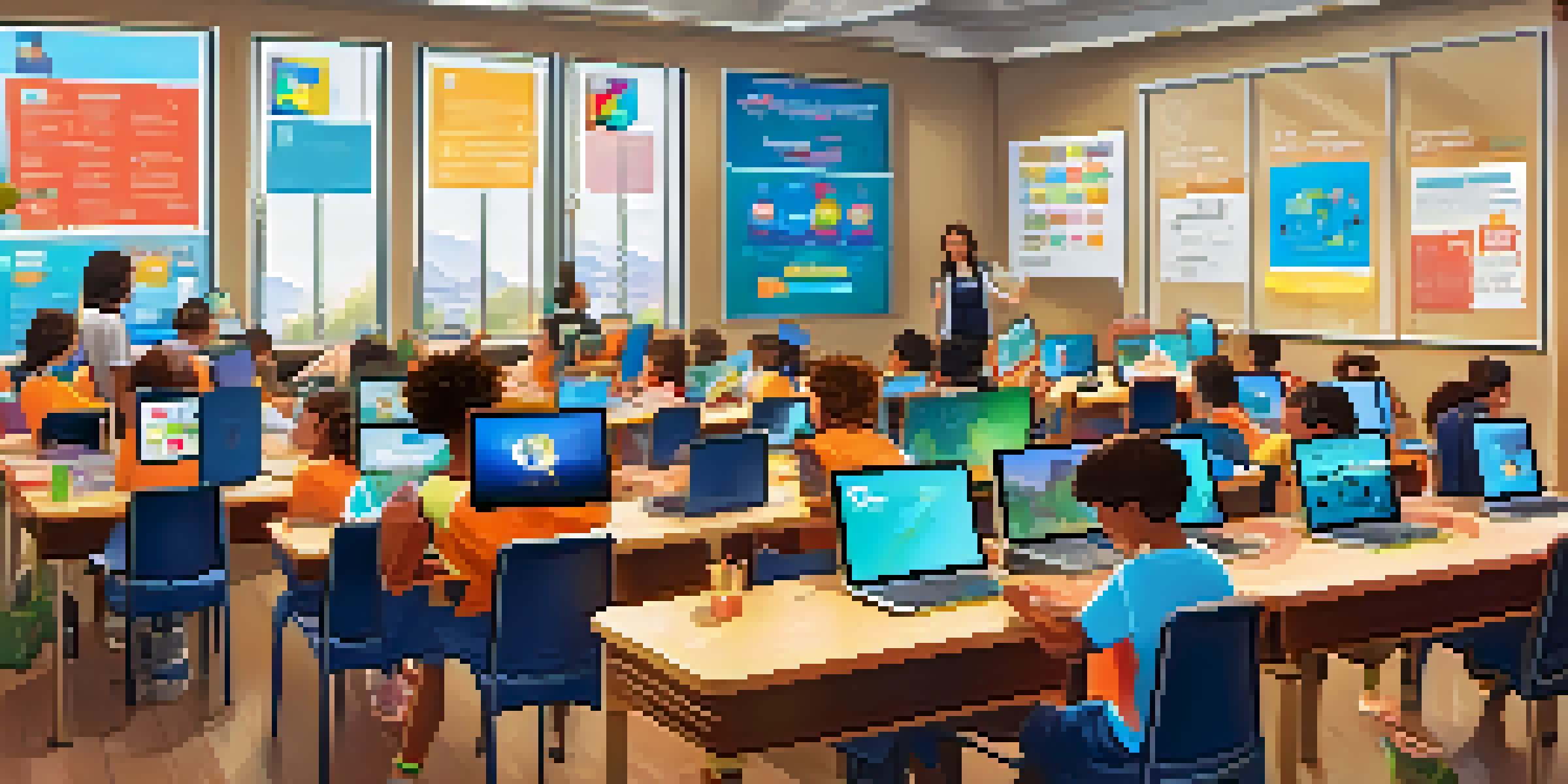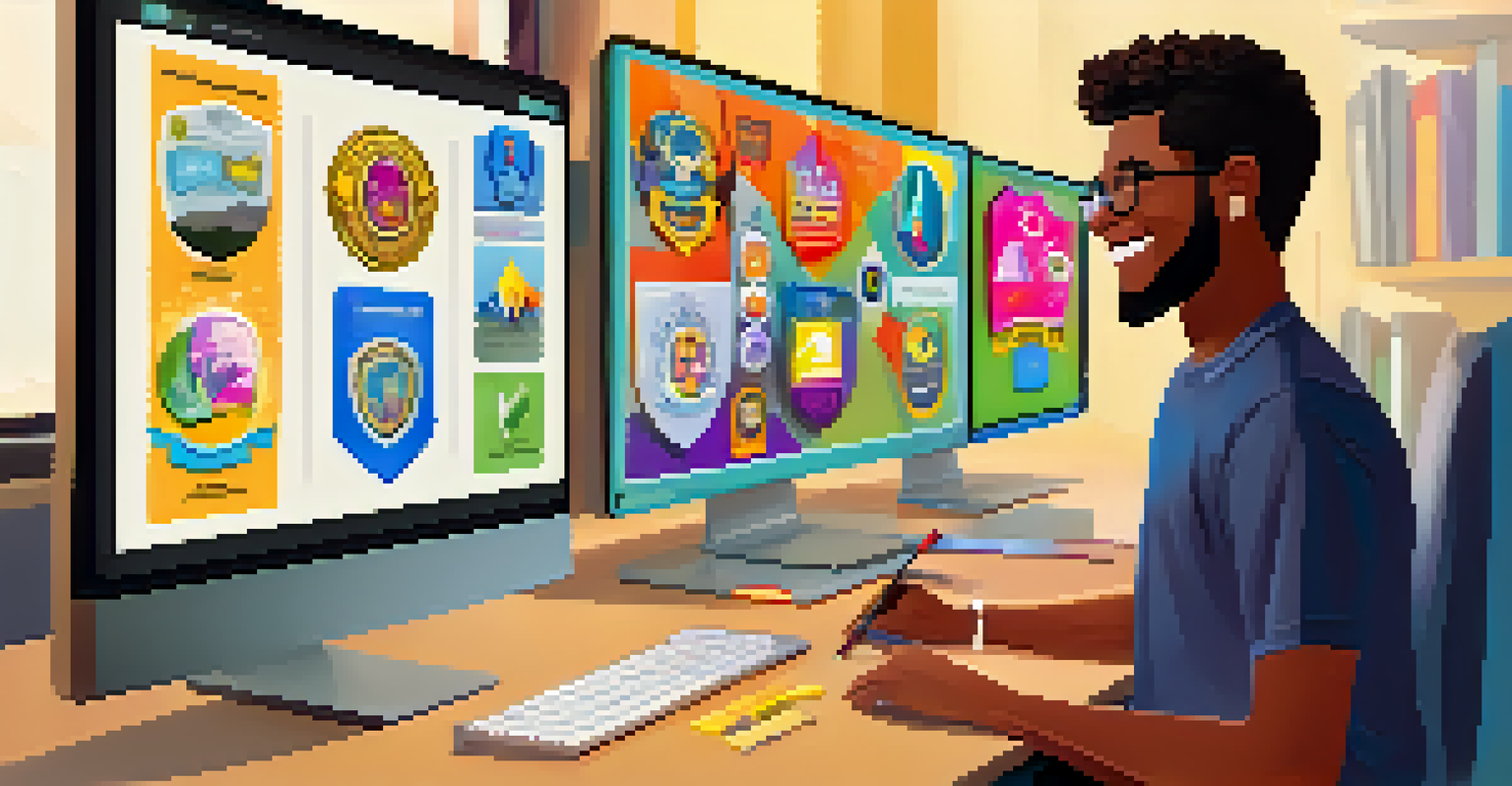Gamification as a Means of Bridging Theory and Practice in Education

Understanding Gamification in Education
Gamification involves applying game design elements in non-game contexts, particularly in education. By incorporating elements like points, badges, and leaderboards, educators can create a more engaging learning environment. This approach not only makes learning fun but also motivates students to participate actively in their educational journey.
Games are the most elevated form of investigation.
At its core, gamification taps into human psychology by leveraging our natural desire for competition and achievement. When students see their progress visually represented through points or levels, it can foster a sense of accomplishment. This connection between enjoyment and learning can significantly enhance retention and understanding of the material.
Ultimately, gamification transforms traditional educational practices into dynamic experiences, encouraging students to immerse themselves in learning. It serves as a bridge between theoretical concepts they study and practical applications through interactive activities and challenges.
Theoretical Foundations of Gamification
Gamification is rooted in various psychological and educational theories, such as constructivism and behaviorism. Constructivism posits that learners build knowledge through experiences, making gamified elements like simulations particularly effective. On the other hand, behaviorism emphasizes rewards and reinforcement, which is where points and badges come into play.

These theories support the idea that students learn best when they have opportunities to engage and apply their knowledge. By integrating gamification, educators can create scenarios that mimic real-world challenges, allowing students to practice skills in a controlled environment. This hands-on approach bridges the gap between theoretical knowledge and practical application.
Engagement Boost through Gamification
Gamification enhances student engagement by incorporating elements like points and badges, making learning more fun and motivating.
Moreover, the incorporation of gamification encourages critical thinking and problem-solving skills. Students are not just passive recipients of information; they actively navigate challenges, make decisions, and learn from their outcomes, solidifying their understanding in the process.
Benefits of Gamification in Learning
The benefits of gamification in education are numerous, with increased engagement being one of the most notable. Students often show greater enthusiasm and commitment to learning when they can earn rewards and achieve milestones. This heightened interest can lead to improved attendance, participation, and overall academic performance.
The only way to win is to learn faster than anyone else.
Gamification also fosters collaboration among students, as many gamified activities encourage teamwork. Working together to complete challenges not only builds camaraderie but also enhances communication skills and social interaction. These soft skills are crucial for success in both academic and professional settings.
Additionally, gamification allows for personalized learning experiences. Educators can tailor challenges and rewards to meet the diverse needs of students, ensuring that everyone can progress at their own pace. This flexibility helps bridge learning gaps and promotes a more inclusive educational environment.
Examples of Gamification in Practice
There are numerous examples of gamification successfully implemented in classrooms worldwide. For instance, platforms like Kahoot! and Quizlet allow teachers to create interactive quizzes that make learning competitive and fun. Students are often eager to participate, as they can earn points and compete against their peers.
Another example is the use of digital badges in online learning environments. These badges serve as a visual representation of achievements and skills mastered, motivating students to unlock new levels of learning. Programs like Mozilla's Open Badges initiative demonstrate how digital credentials can enhance a learner's portfolio.
Gamification Supports Diverse Learning
By personalizing challenges and rewards, gamification accommodates various learning styles, ensuring that all students can progress at their own pace.
Furthermore, project-based learning can also be gamified by incorporating elements such as storytelling and role-playing. By allowing students to take on roles within a scenario, educators can create immersive experiences that deepen understanding and connection to the material, bridging theory with practical application.
Challenges of Implementing Gamification
While gamification offers many benefits, there are challenges in its implementation that educators should consider. One significant hurdle is the potential for overemphasis on rewards, which can create a focus on extrinsic motivation rather than intrinsic passion for learning. Educators must strive to find a balance between engaging students and fostering a love for knowledge.
Another challenge is ensuring that gamified activities align with learning objectives. If the game elements overshadow the educational content, students may lose sight of the skills and concepts they need to master. Therefore, careful planning is essential to integrate gamification effectively into the curriculum.
Finally, not all students may respond positively to gamification. Different learners have varying preferences, and some may find gamified elements distracting or unhelpful. Recognizing these differences and providing alternative pathways for engagement can help educators create a more inclusive environment.
Measuring Success in Gamified Learning
Measuring the success of gamification in education requires a multifaceted approach. Traditional assessments may not capture the full impact of gamified elements on learning outcomes. Instead, educators should consider a combination of formative assessments, surveys, and observational data to evaluate student engagement and understanding.
Tracking progress through metrics like participation rates, completion times, and scores can provide insights into how well gamification resonates with students. Additionally, gathering feedback from learners can help educators refine their approaches and make continuous improvements. This iterative process ensures that gamification remains effective and relevant.
Future Innovations in Gamification
Emerging technologies like VR and AI are set to further transform gamification in education, creating more interactive and tailored learning experiences.
Ultimately, the goal is to foster an environment where students feel motivated and empowered to learn. By focusing on both qualitative and quantitative measures, educators can gain a comprehensive understanding of how gamification bridges the gap between theory and practice.
The Future of Gamification in Education
As technology continues to evolve, the potential for gamification in education is expanding. Virtual reality (VR) and augmented reality (AR) are emerging tools that can bring gamified experiences to life in new and exciting ways. Imagine students exploring historical sites through VR, or conducting scientific experiments in a simulated lab environment.
Additionally, the rise of artificial intelligence (AI) can enhance gamification by personalizing learning experiences even further. AI-driven platforms can analyze student data and adapt challenges to meet individual needs, making learning more accessible and engaging for everyone. This level of customization can bridge gaps in understanding and cater to diverse learning styles.

The future of education is likely to see a greater integration of gamification, making learning more interactive and enjoyable. As educators and institutions embrace these innovations, the connection between theory and practice will strengthen, preparing students for success in an increasingly complex world.